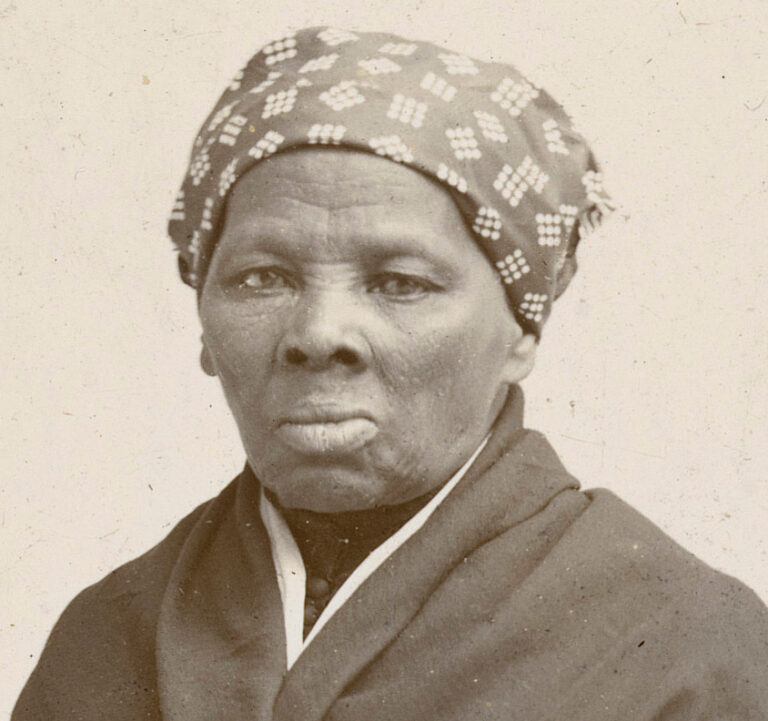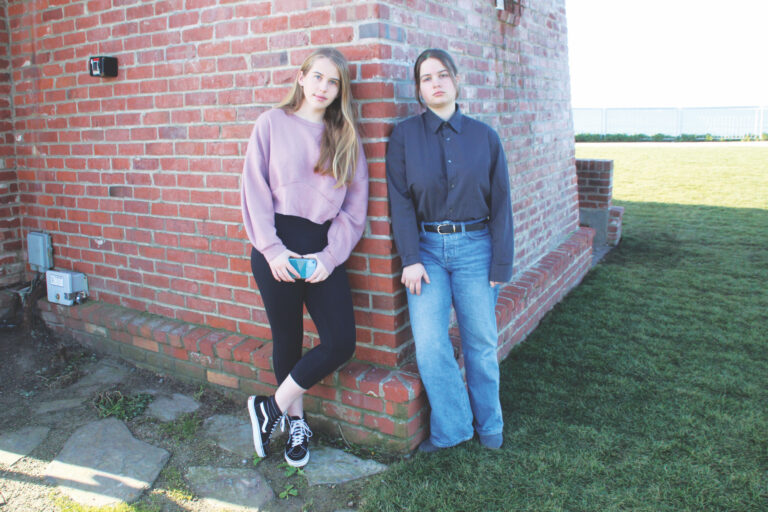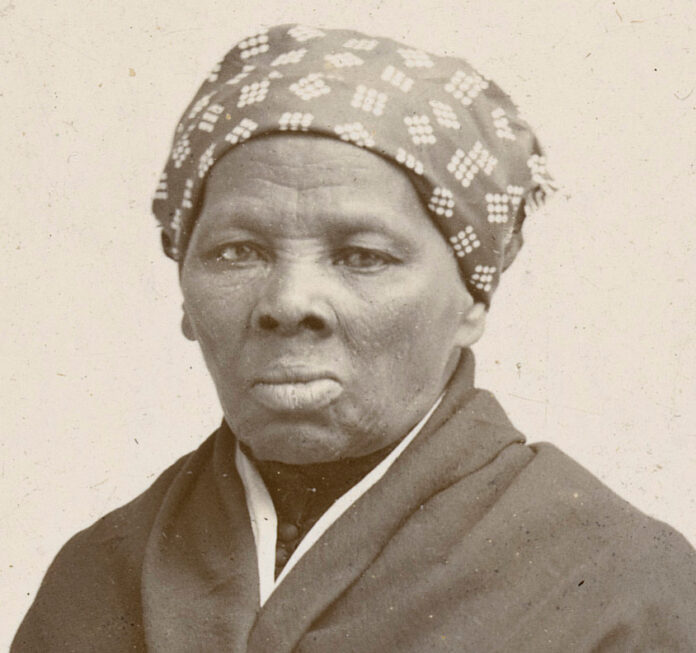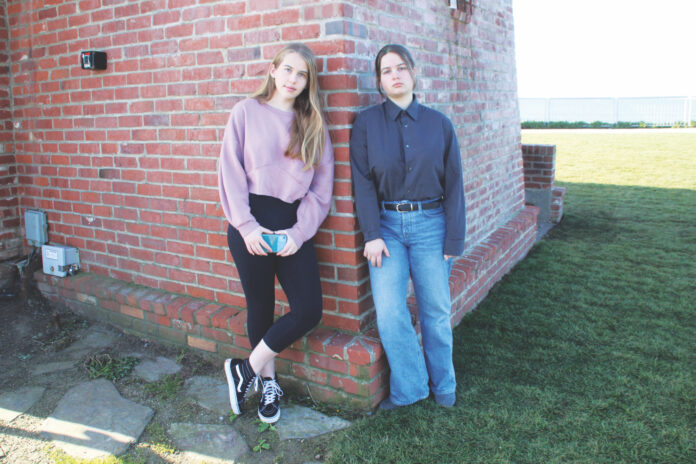It’s been 48 hours since I heard the news, and I still can’t believe it. Dan Lamothe—son, friend, barber, volunteer fireman, ex-bassist and founding member of Stellar Corpses—has died. Even now, as I write this, I can’t wrap my head around it and have difficulty typing through blurry eyes. I’ve been lost in a fog of shock and denial; calls to and from friends across the county and country, drenched in an endless downpour of tears. I never knew I could cry so much.
He died suddenly while training in Ben Lomond to be a firefighter, wanting to give back to the community that gave him so much. Dan—”Mothman,” “Mothy,” or “Big Moth,” as his friends affectionately called him—was only 38, an age that defies all rational explanations of what happened.
I first met him 21 years ago, when I was a fresh transplant to town going to UC Santa Cruz with hardly any friends and a Los Angeles-sized chip on my shoulder. I remember him being cool in every sense of the word. Cool haircut (a psychobilly pompadour, shaved on the sides, ending in an Eddy Munster widow’s peak), cool clothes, cool girlfriend, cool tattoo (“Who gets a giant neck tattoo as one of their first pieces” I’d ask him years later. He just replied with his famous wide grin and laughed, “Yeah, Didn’t really think that one through”).
I remember him being pretty quiet, so I thought he was too cool for school and standoffish. I quickly learned that wasn’t the case; he didn’t waste his breath when he had nothing important or funny to say. He walked humbly and observed the people around him, taking it all in.
As many know, I learned he was hilarious when he opened up. Always cracking jokes, trying to make his friends laugh, especially when things around us turned sideways, and impending doom seemed imminent.
After learning of his death, I drove around in a daze during the twilight moments of the early morning. I was listening to the title track off Stellar Corpses’ Dead Stars Drive-In album–something I hadn’t heard in years for several personal reasons. I pulled over and parked along the cliffs overlooking the Capitola pier, and as the sun rose, I decided my wrecked soul couldn’t hear the chorus “Dead stars still burn” anymore. The next song, “Be Still My Heart,” opens with the line, “walk with me into the morning sunlight, into a world that’s cold and no one ever makes it out alive.” Great. Once again, the waterworks came, and I could swear Dan was having a good laugh, part of that classic Mothy humor.

He was a huge presence in the Santa Cruz music and punk scene. As a musician, he was an inspiration to many. Paul “Wolfman” Grimm (they/them), who played stand-up bass in Fulminante and other various projects and toured with Stellar as a roadie when I couldn’t, has told me countless times it was watching Dan play that inspired them to pick up the instrument.
Over the years, Dan and I would see each other at parties or group hangs with the usual downtown punks and dregs. We became friends but never really spent any time together outside of that. However, we’d start becoming true friends several years after he and singer Dusty formed Stellar, and—technically second but to fans “first real”—the line-up of Emilio Menze on guitar and Matty Macabre on drums was well established.
Dan meant so many different things to so many other people. Because so much of our time was spent around the music scene, those are some of my strongest memories of him. Along with a couple of other bands I’ve toured with over the years, the Stellar Corpses are one I’ve seen live the most to this day. After decades of seeing live music for my own pleasure, as a roadie and as a bartender, believe me when I say I’ve seen thousands of bands, but there was nothing like a Stellar Corpses show, and I rarely missed any.
Of those early days, one favorite stands out. April 17, 2010, we had them at Streetlight Records—where I also work– for International Record Store Day. It’s a day none of us will ever forget for two reasons. First, they were excited to play in a place that meant so much to them growing up. And second, we had to pull the plug on them halfway through because the band was pumping out so much energy, they caught one of our speakers on fire! It immediately became a badge of honor, and we would all laugh about it many times after.

After a couple of years of being friends with the band, I jumped at the opportunity when they asked me to roadie on a 12-city, 17-day U.S. tour in 2011. By then, Kyle Moore had taken over drums, and he was the only one I didn’t know well (which would change quickly after that and several more tours). That stint would generate multiple online blog posts from the road culminating in my–and their–first cover article, published in the July 27-Aug. 3 issue of the Santa Cruz Weekly. Dan was so stoked to have made the cover of a local paper and ensured I knew it often, even years later. When it came out, I was proud but also a little doubtful. Why would this awesome rock band I admired be stoked about something I did? My version of imposter syndrome.
I always loved their music, but it was that first tour where I truly learned to respect them as performers. Whether it was to a nearly sold-out show with punk legends like T.S.O.L. or to 10 people because shady, drug addict promoters didn’t do their job or didn’t tell them the local acts bailed, Dan and the band gave their all, every time. Even when the power went out twice at Miss Lips Lounge–El Paso, Texas’ premier lesbian bar, the boys kept playing with Dan and Kyle, filling the dead space with solos and rhythm duets until the power was restored.
I would tour with Stellar again a year later and work for them another year or two after that for an unofficial Viva Las Vegas show and countless times around Santa Cruz. Through endless, brotherly teasing, Dan and Emilio would always make each other laugh in the van (which hilariously had an “I’m proud of my Eagle Scout” bumper sticker). Often it was directed at Kyle (who Dan lived with for several years), who was “Band Dad” making sure we got to each stop on time, everything in the trailer fit neatly in a real-life game of Tetris, and fixing whatever was needed. Like the time on that first tour when one of the trailer’s tires blew outside Fresno on the second day. Or the night after that in Redondo Beach, when the singer thought the trailer could clear a parking structure height restriction. It couldn’t, and he ripped open the top like a sardine can.
In a bit of comical foreshadowing, Dan had told me before the tour about all the trouble they had with the trailer on the last stint.
“The damn thing kept coming unhinged from the frame. We had to get it welded in five different states,” he told me. “But don’t worry–we have a new trailer and tires. Everything should be fine.”
Whether it was for Stellar Corpses or his short-lived honky tonk duo, Oh Bears! Dan could really slap that bass. Self-taught, too. He would listen to his favorite rockabilly and psychobilly songs and try replicating what he heard. He earned the nickname Danimal just for that reason (and Caveman Dan for another, completely different one). Listen to his recordings –songs like “Steel Butterfly” or “Valley of Madness,” and you’ll hear someone who loved what he did but took the time to learn and practice his craft. It’s a quality that shined live as Dan would always have a huge smile when surrounded by his friends on stage.
And oh man, did Dan have a lot of friends. Just go on social media and see the incredible outpour of love, loss and heartbreak surrounding his death from Santa Cruz and throughout the country.
Of course, nobody’s perfect, but if there was one person on this planet not to have a single enemy, it was him. He always showed respect and never had an ego, even when fans would gush over him. I’ve spoken to so many friends in the last two days, some who had lost touch with him or had grown apart for the usual reasons. But they all agreed that whenever he saw you, no matter how long, he greeted you with a smile, gave you his full attention, and acted like it had only been a day since your last interaction. To this day, I’m still friends with many people I never would’ve met without Dan introducing us, and I’m a better person for it.
He made you feel seen and loved. That you mattered, and he was just happy to be around you. Oh, and he loved Nintendo. Whenever someone on tour had one, he was guaranteed to be posted up playing games for at least some time before a show.
It’s a tragic irony that I hardly have any photos with Dan in two decades of friendship. I was always too busy being in the moment with him or making sure I documented the tours and shows to include myself on the other side of the camera. I am thankful I at least had enough foresight to do that, to keep his legacy for posterity. However, the lesson here is when you’re having fun with your friends, take 2 minutes to snap a photo. And, of course, don’t forget to tell them you love them. I wish I had told him more, and now I won’t be able to again.
Yet, I constantly told him how proud I was to be his friend. Whether it was over beers on his back porch deck or when he’d come into Streetlight Records to dig through the vinyl section only to order an obscure, Swedish honky tonk album. It didn’t matter if he was playing bass, working as a barber or training to be in the fire department; Dan approached the task just like he approached his life, by diving head-first.
He loved life and made his friends love it when he was around. I won’t say some worn platitudes like the world grew darker when he died. Because for so many of us that loved him, it didn’t grow darker. It completely stopped. None of us will ever be the same after this. Ever. Nothing about this is ok, and it will be a long, slow journey to figure out how to get by, one day at a time. Big Moth was taken from us way too soon, and we can do nothing about it except honor the man and live the way he did. With a passion for our lives, love for what we do and kindness for one another.
Damn it, Dan! We all miss you so much. Dead stars still burn. So long, goodbye.





























